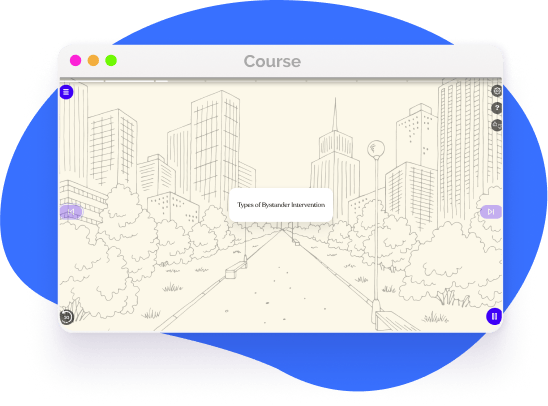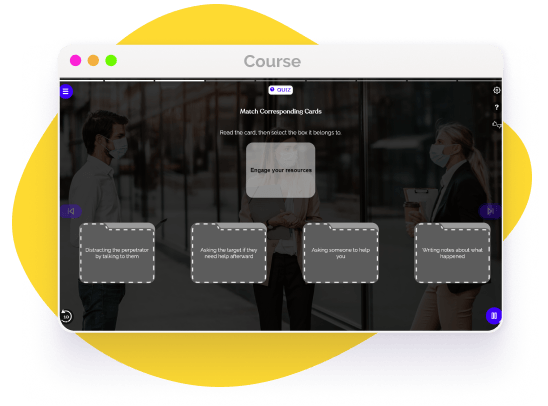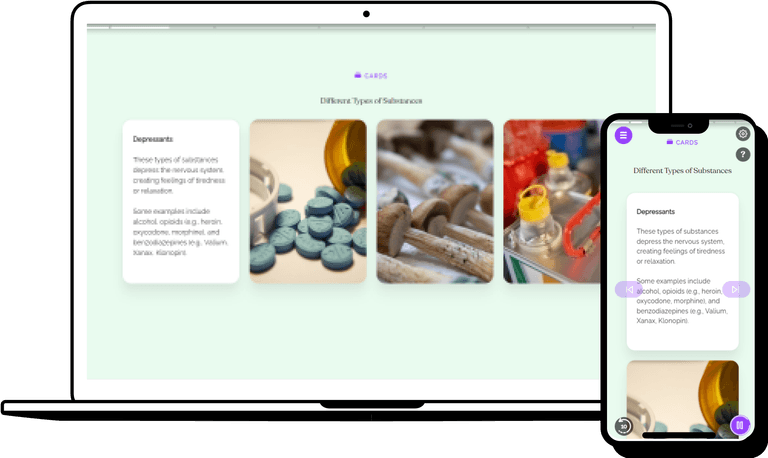Types of Bystander Intervention
Bystander intervention can be broken down into four broad categories, each with corresponding strategy options. Certain methods may involve direct conflict, while other methods are more covert.

There is no one “right” method of bystander intervention
There are four general types of bystander intervention and strategies that can be used for each. There is never just one “right” or “correct” way to intervene as a bystander–there are usually several options available to you. Some techniques we’ll learn about involve direct confrontation, but others are more subtle.

When is it appropriate to intervene in the workplace?
Intervention in the workplace is appropriate when there is a concern related to safety, harassment, or a potential legal violation. If an employee sees a situation that could be harmful, they should use their judgement and resources to intervene in the best way possible. It is important for employees to feel confident in their ability to take action when necessary. This could involve reporting the situation to a supervisor, making a formal complaint, or taking other measures as appropriate.

There are typically a number of options open to you as a bystander, thus there is never just one "correct" approach to stepping in. The appropriate course of action for you to take will be determined by the circumstance, your personality, as well as how safe and comfortable you feel.
The final type is engaging your resources by using a phone, tablet, laptop, notepad, or other devices to document what's happening via a recording or taking notes. However, keep in mind that in some states, the video or audio recording of someone without their permission is illegal.
A second type of bystander intervention is engaging the target. Perhaps by removing them from the situation or providing them with delayed support after the perpetrator leaves. If you're not comfortable stepping in by yourself, engaging other bystanders to help you intervene is the third type of bystander intervention.
The first and most direct type is engaging the person committing the harassment, discrimination, or microaggression. This person is sometimes called a “perpetrator.” To engage the perpetrator directly, you might speak to them about their behavior or distract them from their target.
Types of bystander intervention
When you observe harassment, discrimination, or microaggressions, there are numerous methods to be a proactive, supportive bystander.
Here are some myths to look out for:
- -
Engaging the person committing the harassment, etc.
- -
Engaging fellow bystanders to help
- -
Recording the situation with a device or by taking notes
- -
Engaging the target

Empower Employees with bystander intervention Strategies
This chapter outlines the types of bystander intervention and strategies to support others. It covers topics such as engaging the perpetrator, engaging the target, and recording the situation. By providing employees with an understanding of the four main strategies for bystander intervention in the workplace, employers can help ensure that their organization is a safer place to be.

Helping over 8,000 organizations create a safer, more productive workplace
EasyLlama’s online training course helps prepare employees to navigate bystander intervention. The course guide learners how to appropriately confront harassment, discrimination, and microaggressions in the workplace. The course covers:





















